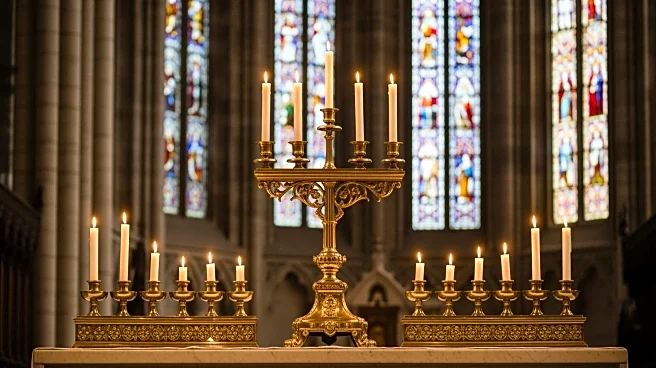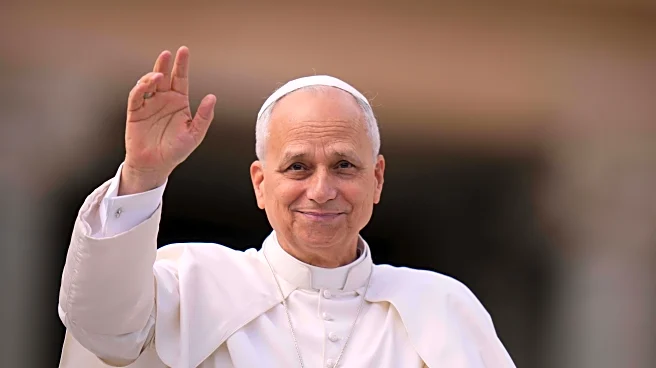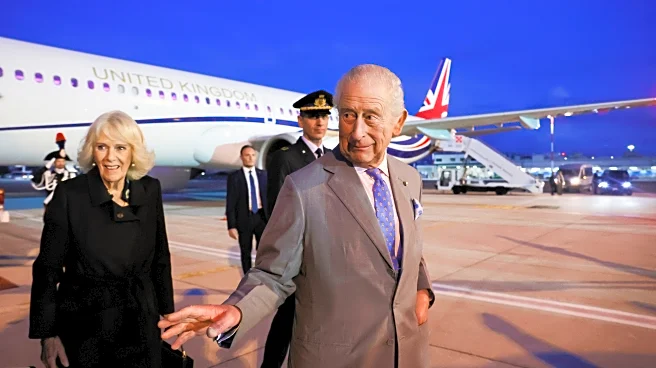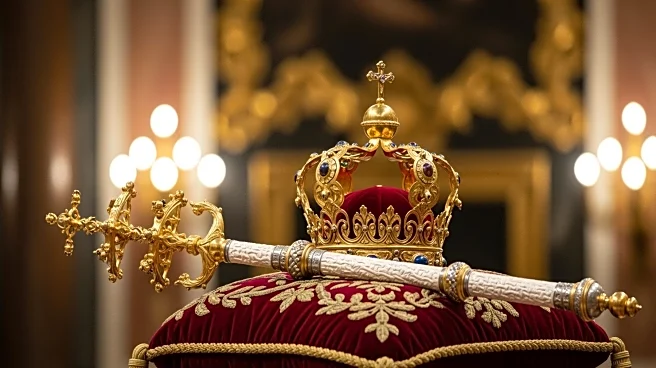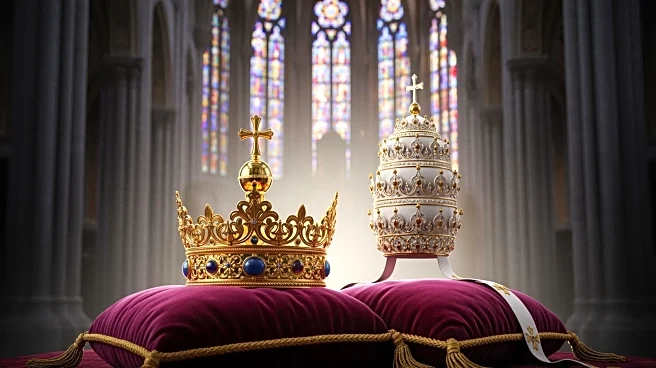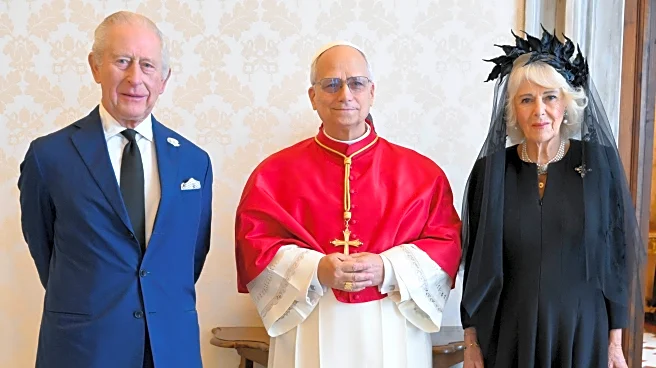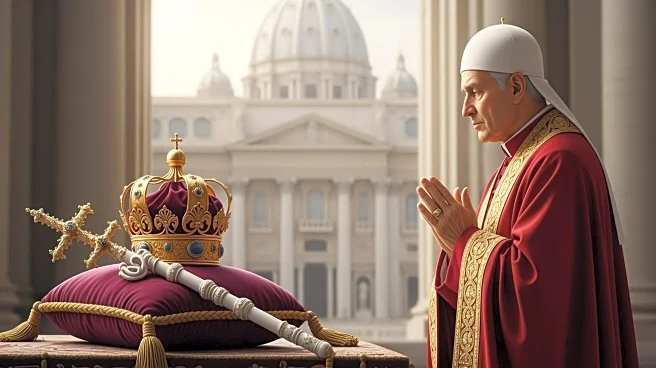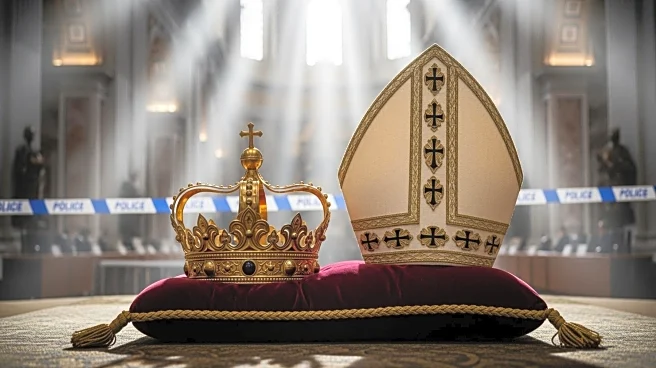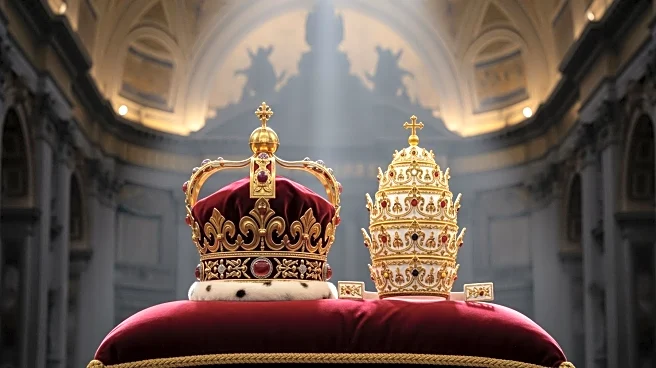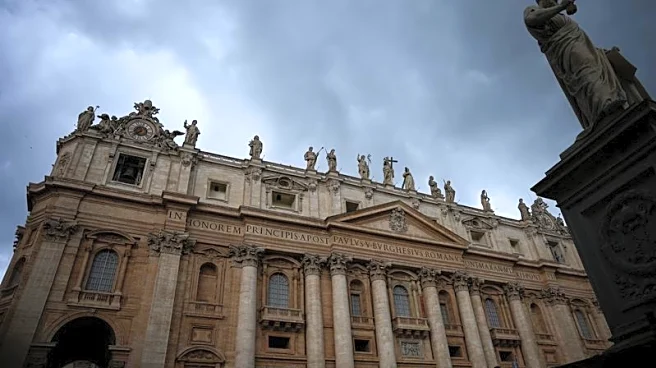What's Happening?
Cardinal Raymond Burke, a prominent conservative American figure, celebrated a traditional Latin Mass in St. Peter’s Basilica with the explicit permission of Pope Leo XIV. This event has thrilled traditionalist
Catholics who felt marginalized after Pope Francis imposed restrictions on the ancient liturgy. The Mass, attended by thousands of pilgrims, was rich in traditional elements such as hymns and incense. The celebration is seen as a sign of potential openness from Pope Leo XIV, who has expressed a willingness to engage in dialogue with proponents of the old Latin Mass.
Why It's Important?
The celebration of the Latin Mass in St. Peter’s Basilica marks a significant moment for traditionalist Catholics, who have felt alienated by previous restrictions. Pope Leo XIV's permission for the Mass suggests a possible shift towards reconciliation and unity within the church. The event highlights ongoing tensions between traditionalists and modernists in the Catholic Church, reflecting broader debates about liturgical practices and church identity. The Latin Mass has been associated with religious conservatism, and its revival could influence the church's direction under Pope Leo XIV.
What's Next?
Pope Leo XIV's approach to the Latin Mass could lead to further dialogue and potential easing of restrictions, fostering greater inclusivity within the church. Traditionalist groups are hopeful for more opportunities to celebrate the ancient liturgy, which could strengthen their community and influence within the church. The Vatican's response to the celebration may set the tone for future interactions between different factions within the Catholic Church, impacting its global unity and identity.
Beyond the Headlines
The Latin Mass controversy underscores deeper divisions within the Catholic Church, where liturgical practices are intertwined with political and cultural identities. Pope Leo XIV's willingness to engage with traditionalists may signal a broader effort to bridge these divides, promoting a more inclusive and harmonious church. The event also reflects the enduring appeal of traditional liturgy, which continues to resonate with many Catholics despite modernizing trends.
